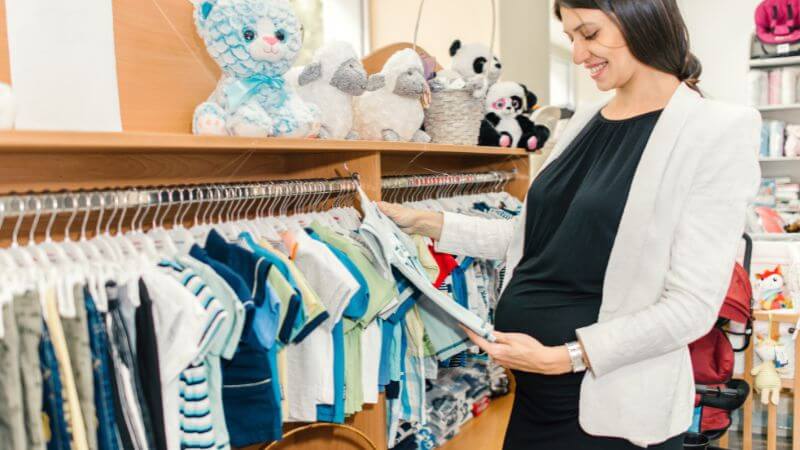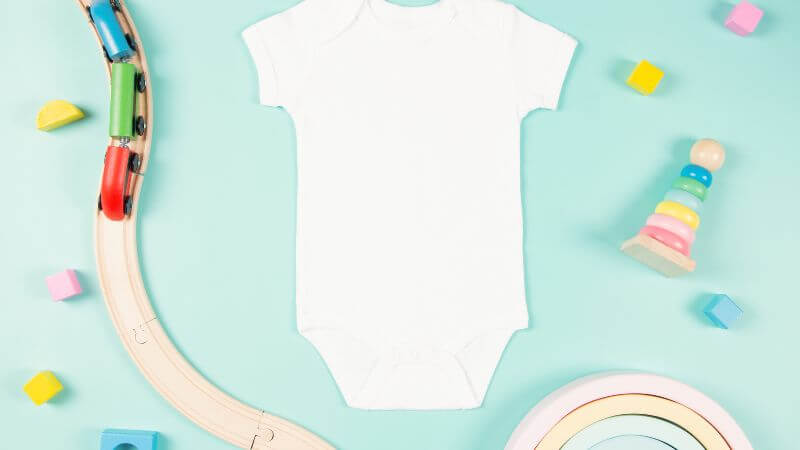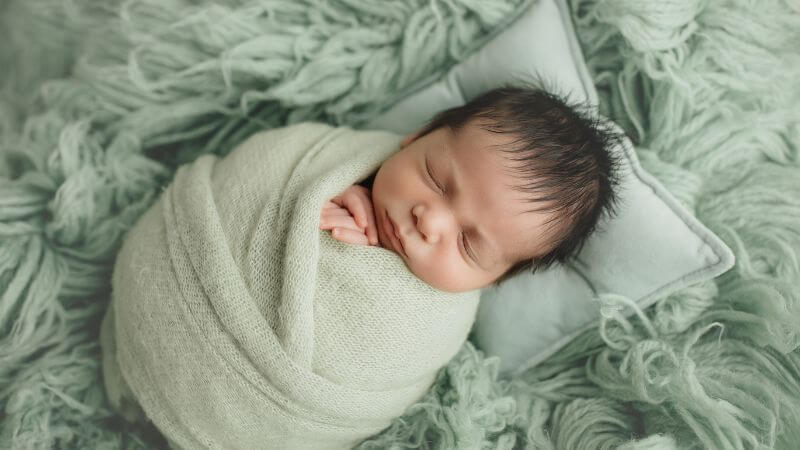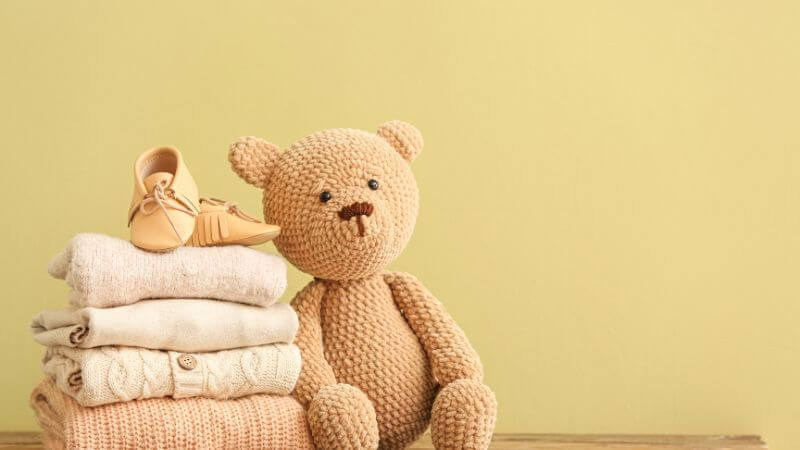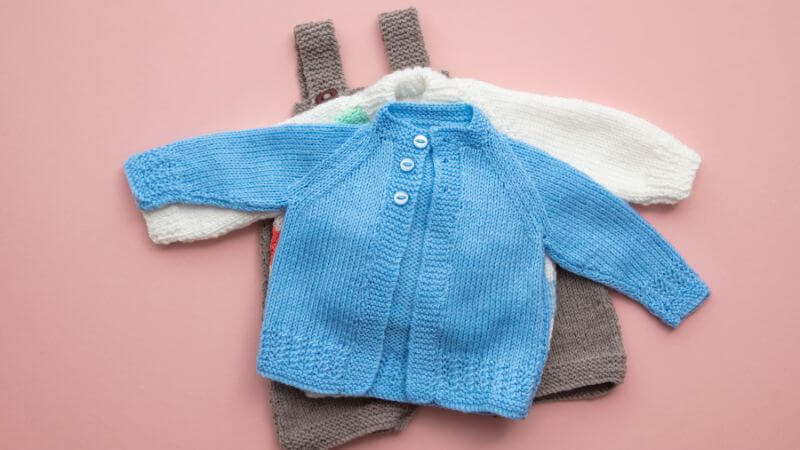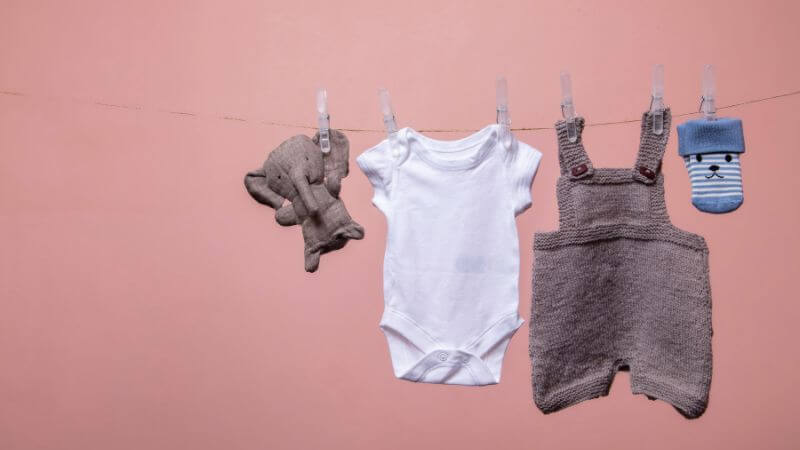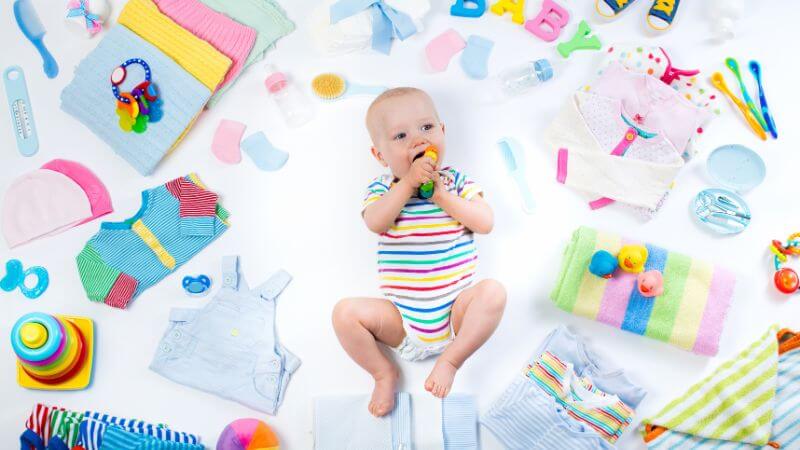What size is newborn clothing is unsettlingly perplexing, even though it shouldn’t be.
This is especially true if you don’t have a frame of reference.
Observing newborns develop and learn about the world is a delight.
And they do grow! Your child outgrows their clothes rapidly since they are growing bigger every day.
Is there a chance you could wear your beloved clothing one more time?
Size judgment can be challenging. What is the ideal fit for infant clothes?
The fact that there is no one-size-fits-all guideline for determining which garments from which brands will suit your kid.
This is because infant clothing does not come in a uniform size.
Giving precise guidelines for infant clothing sizing is impractical, especially when various companies have somewhat variable sizing and labeling policies.
Furthermore, it’s critical to remember that all children, regardless of age, have different sizes, thus the sizes we see are averages.
You must size up if your child falls into the 99th percentile.
This is a quick instruction on how to determine your baby’s clothing size and whether their items are becoming too small.
What Size Is Newborn Clothing: To Buy Baby Clothes
-
Trial
Prior to purchasing, try to buy baby things in person whenever you can.
This will give you the chance to touch and feel the clothing and determine a product’s size before making a purchase.
Shopping in person helps avoid impulsive buys since just because your baby fits into a 3-month romper in one brand, it doesn’t imply she will in another.
-
Size Up
Generally speaking, it’s preferable to buy large.
You may always roll up sleeves or trousers on too-big things and let your baby grow into them over time.
Your kid will develop faster than you anticipate. Who knows?
After a trip through the laundry, you could discover that an item that was initially too big fits well.
-
Wash Before Wear
Whether your baby’s clothing is brand-new or secondhand, it’s crucial to wash anything that comes into contact with their skin to get rid of any stains, dirt, or other items you might have overlooked.
What Size Is Newborn Clothing: Importance
Selecting the appropriate size for your baby’s clothing is essential for their comfort and well-being.
Unfitting clothing can irritate them, limit their range of motion, and even hinder their growth.
Furthermore, if you buy baby clothes that are too tiny, they will outgrow them fast, which will need frequent shopping excursions and extra costs.
However, buying excessively large clothing might put them in danger of falling or stumbling over large trousers or sleeves that hide their hands.
When choosing infant clothing, it’s critical to strike the ideal mix between comfort, usefulness, and appropriate fit.
What Size Is Newborn Clothing: Measurement Guide
The ideal position for your infant is on a level surface that has previously been designated with a height measurement.
To achieve an accurate height measurement, gently pull your baby’s legs out to straighten them and measure from the top of the head to the heel.
It’s preferable to do this with assistance from another person because your kid will probably be wiggling.
Once your child is tall enough to walk, you may measure their height by placing them against a wall and taking a measurement from the top of their head to the floor.
Understanding Baby Clothes Sizing
Infants can have a wide range of weights at birth and arrive in a variety of shapes and sizes.
Some infants could be little and fragile, while others might be bigger and stronger.
Parents must be aware of this variance and realise that their infant’s unique demands might not always be met by traditional sizing charts.
Weight Based Sizing
Weight-based sizing ensures a better fit and comfort for newborn clothing by considering the baby’s weight at birth, as loose or tight garments can cause discomfort and restrict movement.
-
Speak with your pediatrician:
Your baby’s development and growth might be better understood by consulting with your pediatrician.
Talk to your doctor about your baby’s weight at prenatal checkups.
Follow-up appointments to get advice on suitable clothing sizes.
-
Select Breathable and Soft Materials :
The skin of newborns is sensitive and easily irritated.
Opt for apparel composed of supple, airy materials like bamboo and cotton that are easy on the skin and encourage ventilation.
-
Look for Weight-Based Sizing Charts :
In addition to normal size charts, several infant apparel businesses also include weight-based sizing charts.
Usually, these charts group sizes according to weight ranges, which makes it simpler for parents to choose the ideal fit for their child.
-
Remember to Layer :
This is essential to keeping your baby comfortable in a range of temperatures.
Select garments that are simple to layer so you may adjust the number of layers to suit your baby’s body temperature.
Age-Based Sizing
Having an understanding of age-based size will help you make sure your child is fashionable and comfortable from the beginning.
We’ll go over the fundamentals of age-based size for newborns, giving you the information you need to confidently outfit your little one.
-
Newborns (0-3 Months)
Newborn size apparel, as the name implies, is to fit babies from birth to about three months of age.
These little clothes appear to fit your baby’s developing physique and sensitive skin thanks to their soft materials and elastics.
For comfort and simplicity of dressing, look for features like expanding necklines and snap closures.
-
0 – 3 Months (3-6 Months)
It’s time to move your baby out of newborn sizes and into the 0-3 months category.
It usually suits babies up to six months old.
This size fits your baby snugly and comfortably but gives them a little more freedom to move and stretch.
Look for materials that are flexible and can accommodate your baby’s motions, as well as waistbands that to adjust.
-
3 – 6 Months (6-9 Months)
Your baby will probably be ready for the 3-6 months size range.
It fits babies up to nine months old, around six months.
When your baby gets more active, this size allows for more freedom and mobility.
For apparel that will survive your little explorer’s travels, look for reinforced seams and sturdy fabrics.
-
6 – 9 Months (9-12 Months)
When your child gets closer to becoming one year old, it’s time to move them up to the 6–9 months size range.
It is made to accommodate babies as young as twelve months.
This size fits snugly and comfortably while yet offering enough of space for growth.
Seek for adaptable pieces that may be worn for a variety of situations and seasons.
Height Based Sizing
Certain manufacturers base their sizes on height instead of age, even though age and weight are frequent sizing determinants.
It’s not always practical to measure your rapidly developing child every time you want to buy anything.
Even if it could be preferable to obtain your baby things depending on height.
However, knowing the height that corresponds with each “age” size will help you choose clothing that fits your kid properly.
When your baby visits the doctor or other healthcare provider in the early months, they will weigh them and measure their height;
But, if these visits are infrequent, it might be helpful to learn how to measure your baby yourself.
- 0-3 Months: If the infant is up to 24 inches tall, go with the sizes marked “Newborn” or “0-3 Months.”
- 3-6 Months: Clothes labelled “3-6 Months” usually suit babies who are 24 to 27 inches tall.
- 6-9 Months: Clothes marked “6-9 Months” are appropriate for your baby’s growing height, up to 27 to 29 inches.
- 9-12 Months: If your baby is 29 inches or larger, choose the sizes marked “9-12 Months.
Gender-Based Sizing
When choosing infant apparel, gender-based size is another factor to take into account.
Even if a lot of businesses have unisex alternatives, certain clothes are especially for boys or girls.
These variances in colors, patterns, and styles have been attributed to gender.
It’s crucial to remember that different measures don’t always equate to gender-based sizing.
On the other hand, certain designs can be more specifically designed to match the standard body type connected to a given gender.
-
Recognising Size Based on Gender
Gender differences in size guidelines can be seen in baby apparel.
Many essentials, like onesies and sleepers, are generally gender-neutral.
Other shapes and designs may be modified to better suit the requirements of boys and girls.
-
Baby Boys’ Clothes Sizes
Boys’ clothes frequently have wider cuts and marginally bigger proportions, particularly in the chest and shoulders.
Because of this, the usual proportions of infant boys may be accommodated, as can better movement and comfort.
-
Sizes of Girls’ Newborn Clothes
Smaller sizes and thinner cuts are common in girls’ apparel, particularly in the waist and hip areas.
Additionally, fashions could have feminine touches like bows and ruffles, which are ornamental components.
-
Things to Think About for Unisex Clothes
For babies, unisex clothing options are adaptable and sensible, particularly in the early months when comfort and convenience of dressing are primary considerations.
To provide simple diaper changes and unfettered mobility, choose materials that are soft and elastic.
What Size Is Newborn Clothing: Summary
At first, choosing the correct baby clothing size for your child may seem impossible, but with the appropriate resources and understanding, it gets much easier.
By being aware of the various aspects that go into sizing, getting precise measurements, and using size charts tailored to each brand.
And if you adhere to the preceding advice, you’ll be well-prepared to dress your baby in cozy, well-fitting clothing that promotes healthy growth.
Recall that content parents make happy babies!
Tinydale is on YouTube, Click here to subscribe for the latest videos and updates.
Follow Us: Facebook | Instagram | Twitter | Youtube | Pinterest

